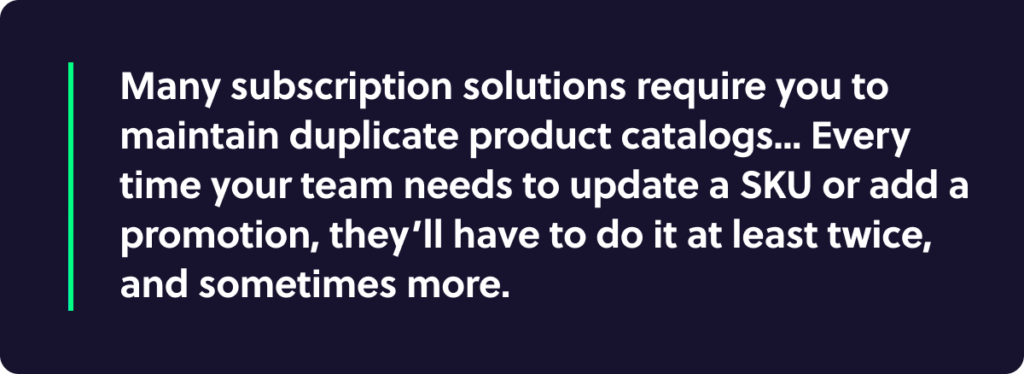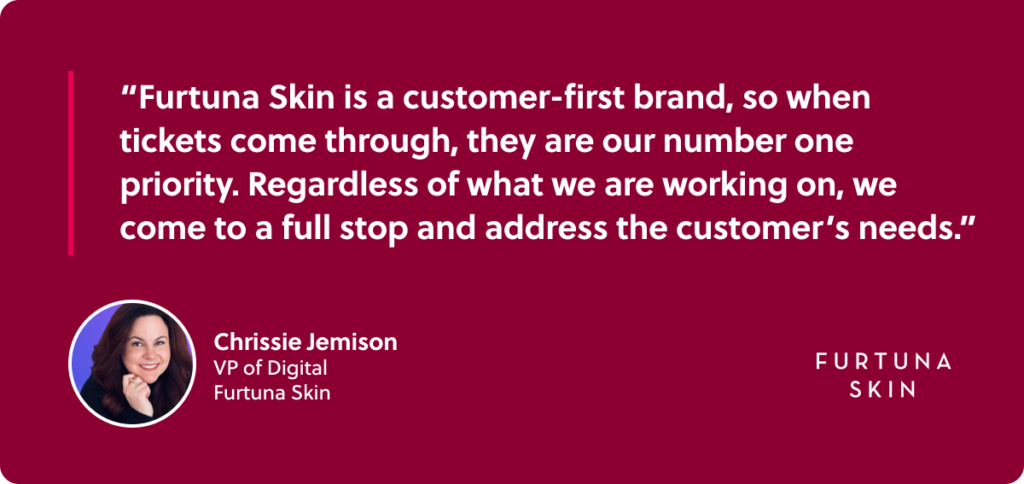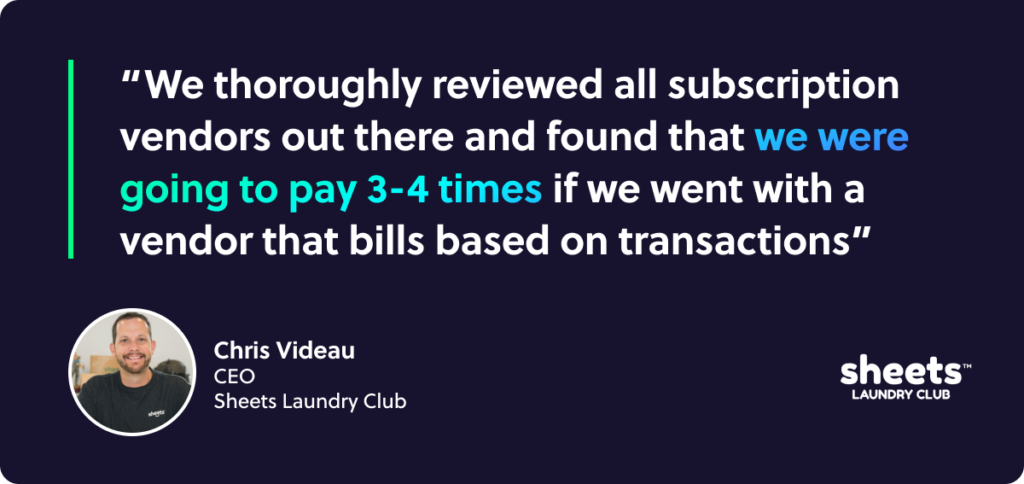Thought Leadership
Roadmap to ROI: 5 efficiencies to look for in a subscription platform

Inflation continues to strengthen its grip on the average consumer’s wallet. Purchasing power among even the highest-flying demographics is falling back down to earth. And the eCommerce brands and retailers who rely on that precious discretionary income are starting to brace for impact.
Right now, that means responding in kind to consumer behavior by cutting unnecessary costs and doubling down on efficiency. Given the powerful optimizations they unlock, subscriptions are likely to make the cut as an essential eCommerce tool amid a looming recession — but make no mistake: subscription mileage varies, and ROI comes down to your tool of choice.
Whether you use a third-party subscription platform or a homegrown solution, you can bet your bottom dollar it comes with a range of direct and indirect costs to keep track of over the course of its lifetime. To be sure you’re making the right investment, you need to get crystal clear on the total cost of ownership for your tool of choice — and know exactly what peak operational and financial efficiency looks like in a subscription solution.
On that front, we have answers. These are the top five efficiencies you need to look for in a subscription platform to be sure it’s the right solution to help you weather the storm of uncertainty and land safely on a cushion of ROI.
5 signs of an efficient subscription platform
Subscription platform efficiency comes down to the operational and financial costs associated with it (think: how you acquire or develop your tool of choice, deploy it initially, and continue to maintain it over its lifetime) — and whether or not your spend can be optimized.
Here’s how to know you’re on the right track.
1. Your subscription technology is flexible and future-proof
There are few things less efficient in eCommerce than a tool that slows you down when new industry trends emerge. Ask yourself if your subscription platform gives you the flexibility you need to respond to consumer needs today, tomorrow, and 5-10 years from now.
If you’re unsure, a good litmus test is whether it integrates seamlessly with your tech stack and other leading eCommerce tools and apps. Beyond plug-and-play integrations, another good sign of future-facing efficiency is how a platform is (or is not) keeping pace with current eCommerce best practices and consumer expectations for a delightful subscription experience. An efficient subscription platform has to be flexible enough to support integrations — but it should also come with enough out-of-the-box features that you’re not relying on other apps to help you keep up with the times.
Here’s an example. Given that 73% of shoppers expect brands to understand their unique needs and expectations, your subscription tool should already offer some form of guided selling, curation, or personalized membership experiences to meet that consumer need.
If your current subscription solution hasn’t yet addressed this kind of personalization trend, it’s probably already costing you — and you have more to gain from a more efficient tool that moves with the times.
2. Your subscription tool is easy to learn and manage day-to-day
A subscription platform that’s a headache to use will increase the time it takes your eCommerce team to get up and running with it and manage it every day thereafter — and indirect operational costs like this can add up if they go unchecked.
To evaluate the operational efficiency of your subscription platform, consider whether any costly recurring issues arise in your team’s day-to-day usage. For example, many subscription solutions require you to maintain duplicate product catalogs — one for the subscription platform and one for your eCommerce platform. Every time your team needs to update a SKU or add a promotion, they’ll have to do it at least twice, and sometimes more. Even worse, duplicate SKUs can lead to human error and expensive inefficiencies like shipping the wrong product, processing more returns, and missing out on sales from unforeseen stockouts.

These potential pitfalls are challenging enough for tenured team members, but consider what would happen if they left the company and new people joined. When looking at your tool’s efficiency, account for the time it takes new joiners to learn the basics of the tool, along with any customizations or optimizations that make your subscription experience great.
It’s always best to look for a subscription platform that’s user-friendly and well-documented. Bonus points if the platform comes with a dedicated customer success team to get everyone up to speed. That’s right — with efficiency.
3. Your subscriber dashboard is simple and intuitive to shoppers
Subscribers expect to have total control over their account and payment information and are quick to cancel their subscription if they don’t get it. Perhaps even more frustrating to shoppers is when things like trying a new product, skipping a month, or canceling their subscription altogether feel like an impossible feat.
If your subscriber dashboard is anything less than intuitive to customers, you might pay the price in customer loyalty — and it will definitely cost you bandwidth among internal resources. Just ask Furtuna Skincare, who initially launched subscriptions with a platform that offered customers a confusing subscriber dashboard. Already a lean and bandwidth-constrained team, they found themselves flooded with service tickets — and customer concerns aren’t something they take lightly.
“It was incredibly disruptive,” said Chrissie Jemison, vice president of digital at Furtuna Skin. “Furtuna Skin is a customer-first brand, so when tickets come through, they are our number one priority. Regardless of what we are working on, we come to a full stop and address the customer’s needs.”

Remember that some subscription solutions offer better customer-facing UX than others — and that the quality of your shoppers’ subscription experience impacts your internal resources and, in turn, the overall efficiency of your tool.
4. You can accurately quantify the total cost of your subscription solution.
Whether you built your own subscription solution in-house or partnered with a third-party provider, you can’t be certain of the actual value it delivers until you nail down exactly what it cost you from launch to present day.
Naturally, there are different cost efficiencies to consider for each solution —
If you use a homegrown subscription solution:
Some eCommerce brands, in an effort to shoot for efficiency, fall into a trap by building a native subscription solution. Trading in third-party subscription fees for full control of a bespoke subscription experience does sound pretty good — but let’s not forget about the valuable engineering and product resources a homegrown solution still requires. Or that the initial build is the first, but certainly not the last, investment you’ll put into a native solution.
In 2023, the average senior developer makes about $148,000 annually, shaking out to $71 per hour. Then factor in how many resources worked on the initial build and for how many hours, and whether those hours were spent building for scale and flexibility in the future. Hopefully, they were — because the day will eventually come when your homegrown solution needs to integrate with a popular eCommerce app like Klaviyo. Or evolve to keep up with changing industry best practices. Or comply with new privacy standards. The list goes on and on…
If a homegrown solution isn’t built to scale, you may be looking at unpredictable expenses in the future. Not exactly efficient.
If you use a third-party subscription solution:
On the other hand, a third-party external solution can also have hidden and unexpected costs that you should be aware of. Understanding the entire cost of a subscription platform, from implementation to renewal, is a crucial piece in the puzzle of its overall efficiency — and some pricing models make that calculation easier than others.
For example, some subscription platforms charge a transaction fee for each recurring order. Others tack on an additional transaction fee when a one-time purchase gets added to a subscription order, making it nearly impossible to forecast the total cost (much less the ROI) you can expect from the tool.
That’s precisely why Shinesty migrated their six-figure subscription experience to Ordergroove’s platform. “Even a couple of cents per order is a killer,” Jens Nicolaysen, CMO and co-founder of Shinesty, said about transaction fees.
And they’re not the only ones who feel that way. Sheets Laundry Club also steered clear of transaction-based pricing to ensure their subscription tool scaled with their sales.
In a webinar, Sheets Laundry Club’s CEO Chris Videau said, “We thoroughly reviewed all subscription vendors out there and found that we were going to pay 3-4 times if we went with a vendor that bills based on transactions.”

If your subscription solution’s pricing structure is full of variables, serious financial inefficiencies could go unnoticed until it’s too late. To avoid nasty surprises, look for a subscription platform with transparent pricing, like an annual fee that scales with you no matter your transaction volume.
5. Your subscription solution comes with robust out-of-the-box features
While every online store has different needs, there are some subscription features you should consider eCommerce table stakes in 2023. If your tool of choice doesn’t come with the built-in capabilities outlined below, then it doesn’t give you everything you need to stay competitive in today’s market. It does, however, give you more inefficiencies to solve for.
These are the core features to look for in a subscription platform to be confident it’s worth the investment.
Enrollment capabilities
Multiple enrollment touchpoints: Your platform should let you add subscription enrollment to multiple touchpoints across your site, from your product quick view and detail pages all the way through to checkout. Even better if the platform makes it easy to customize the subscription experience to match your brand aesthetic.
Furtuna Skin can also champion the importance of this side of the subscriber experience. Before moving over to Ordergroove, their subscription enrollment form was challenging for customers to locate on product detail pages — and it didn’t live up to their luxury brand aesthetic when shoppers managed to find it. Just three months after switching to Ordergroove to improve their subscription experience, their subscriber base had grown by 103%.
Promotional capabilities: Your subscription platform should make it easy to offer shoppers a range of incentives to encourage them to enroll in a subscription. Standard promotional capabilities include a buy more to save more discount, gift with purchase, and retention rewards like getting every fourth recurring order free.
Churn reduction capabilities
Intuitive subscriber dashboard: We’ve said before, and we’ll say it again: a smooth subscriber experience is mission-critical for ROI. When the subscriber dashboard is easy-to-use, you get valuable bandwidth back for your support team — and more lifetime value from your subscribers. Ordergroove data shows that subscribers stay enrolled 135% longer when they can skip an order and 71% longer when they can swap a product for a similar item.
Churn mitigation with artificial intelligence: AI can also help you reduce churn and extend lifetime value. For instance, Ordergroove’s Anticipate AI proactively detects when a subscriber is about to churn due to overstock and automatically sends them an email asking if they’d like to pause their upcoming order. Our data shows that this preemptive communication can reduce churn by as much as 17%.
Capabilities to boost average order value
Instant upsell: Your platform should allow subscribers to add an item to their order in just one click, whether it’s a one-time purchase or a brand-new subscription.
Free shipping threshold: Shoppers appreciate free shipping, and eCommerce brands appreciate recurring revenue and higher average order values. So, your subscription platform should allow you to create a free shipping minimum to encourage customers to add more to their cart.
Product bundles: Look for a platform that lets you sell more products with less marketing. Product bundling capabilities allow you to offer more subscription variety and value while giving shoppers even more control over their orders.
Without these key features in your subscription toolkit, you might find yourself spending on additional tools (or internal dev time and resources) to close the gaps–pretty much as far from efficient as you can get.
Subscription solution efficiency is sink or swim
eCommerce brands and retailers have nothing to lose by verifying that every penny they invest in their online store is money well spent. But with shoppers cutting back on spending, they have everything to gain.
Now that you know exactly which efficiencies to look for in a subscription platform to be sure you’re on the road to ROI, you can compare them to your own tool and see how it stacks up. If your solution ticks the box for all five efficiencies, congrats — your subscriptions are a well-oiled machine.
But if your subscription solution ticks four boxes or less, you might be leaving valuable efficiencies and ROI on the table. To see for yourself how Ordergroove can help you get more mileage with an efficient subscription solution, click here to schedule a demo.